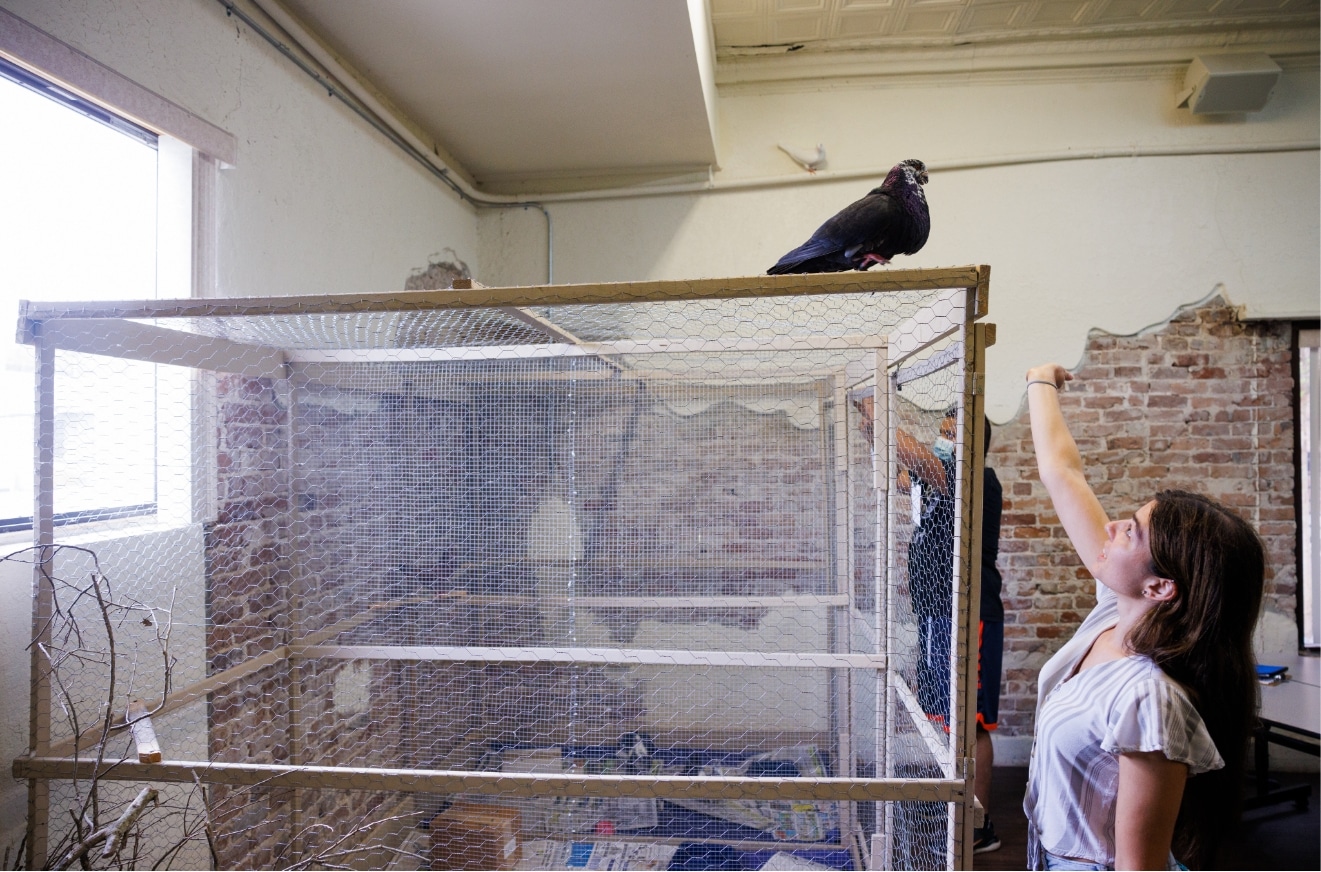
By Richard Burnett
Long after first walking into his math class at Beacon College, the student showed no sign of progress. He was visually-impaired, disinterested and disengaged — until one day, his professor, Dr. Kevin Chandler, had a eureka moment while talking to him.
“Turned out he was a drummer and had brought his drum set with him to college,” said Chandler, an associate professor of mathematics. “He said he needed to find a bass player to jam with. Well, I told him I could help him with that.”
An experienced percussionist, Chandler bought a bass guitar, quickly learned to play it and started practicing with the student a couple of times a week. Chandler would also talk about how math played a key role in music, such as the interplay of notes, beats, measures and patterns.
“All of a sudden, he was fully engaged in the music and the math,” Chandler said. “That changed everything for him in the class. And as a teacher, it’s so great when you can make connections with a student that way.”
Those connections are especially important at Beacon in teaching STEM subjects — science, technology, engineering and math — educators say. For most of the college’s neurodivergent students — with dyslexia, autism, ADHD and other learning differences — success in STEM had been hard to come by before entering Beacon. Many had been systemically shuffled out of STEM courses early in their schooling, told they couldn’t cut it by schools that couldn’t address their learning issues.
The result: Neurodivergent students across the country are largely MIA at the college level when it comes to STEM education, researchers say. (See Why Are Students With Disabilities So Invisible in STEM Education? (Opinion) (edweek.org) )
Cracking the code of STEM learning for neurodivergent students
At Beacon, however, educators have crafted a program aimed at cracking the code of neurodivergent learning in STEM. Individualized and personalized, the program operates through a combination of technology, flexibility, higher teacher-to-student ratios and one-on-one instruction.
In math, for example, the college uses an artificial intelligence program to individualize every course, factoring in the course material and each student’s learning differences. There are no lectures; only one-on-one instruction by two instructors per class, which is capped at 15 students.
The approach can mean night-and-day for neurodivergent students, Chandler said.
“Every semester, we get so many students who say, ‘I did so horrible in math in high school. I’ve never been able to understand it’,” he said. “Three or four weeks later, I hear them say it’s the first time in their lives they can actually do math. So, we’re making a difference. We have a 96% passing rate. At any other place I’ve taught, you’re doing well if you can get 50% to pass.”
Though the college does not offer a math major, its emphasis on individualized/personalized instruction in STEM has made science-oriented courses among its most popular majors, including computer information systems (27%), anthrozoology (22%) and psychology (7%).
Passion, positive attitude and creative approach
Anthrozoology instructor Bryan Cushing said the key to teaching science to any student is having a passion for the subject, a positive attitude and a creative approach that brings the subject alive for them. Bringing all of that to the table especially helps neurodivergent students overcome negative past experiences when schools have discouraged them from taking STEM classes.
“Some of these students haven’t taken a STEM course in five years or more,” he said. “We have to do the leg work to get them comfortable again with science classes. They need teachers who are passionate about science, who care about them and with whom they have something in common.”
With that as a foundation, the other essentials to teaching anthrozoology involve providing the necessary practical experiences that will energize students aspiring to be zookeepers, animal trainers or even veterinarians in the future, Cushing said.
“We really emphasize a hands-on approach,” he said. “Whether its animal husbandry in the fall or animal welfare in the spring, our students are taking care of animals, keeping them fed, clean, happy and alive, with much of the work coming outside the classroom. We give them the experience of a real job — including measuring food, record keeping, well-being assessment and schedule management.”
Benefits of a nurturing space
Amid the various challenges of working with neurodiverse students, one of the key goals for Beacon’s STEM teachers is to set a nurturing tone that dispels anxiety about past failures and cultivates learning in the here and now. That includes accommodations, such as smaller class size, focus on individualized help (not lectures), and allowing extra-educational resources (like calculators in math class).
In this nurturing space, teachers can tap more effectively into the STEM educational potential of neurodiverse students, experts say.
“Society, parents and other students need to understand that students with disabilities are as capable of academic achievement as any other student, given the proper accommodations that allow for success,” wrote Dr. Janelle Johnson, as associate professor of STEM education at Metropolitan State University of Denver in Education Week.